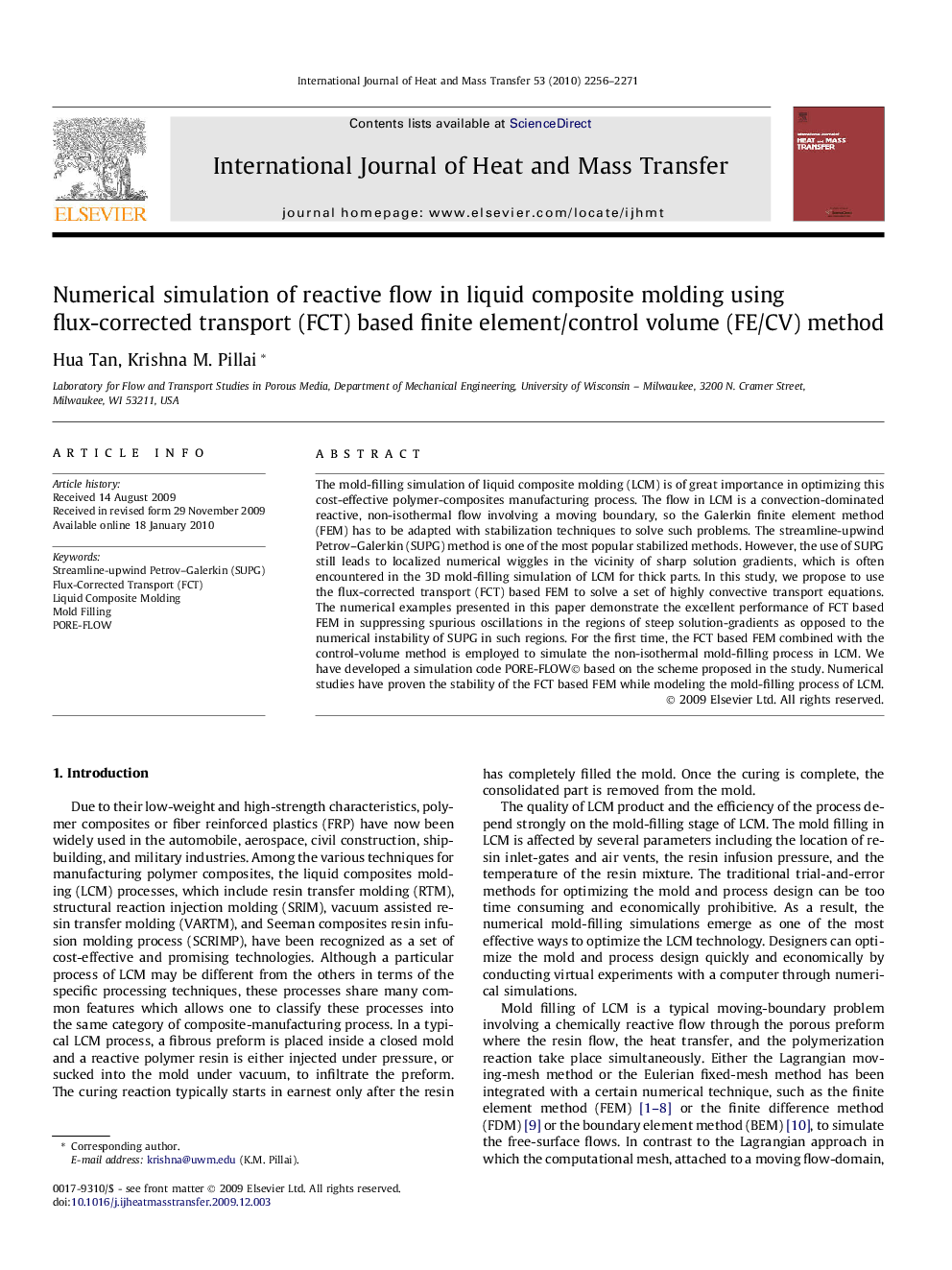| Article ID | Journal | Published Year | Pages | File Type |
|---|---|---|---|---|
| 660190 | International Journal of Heat and Mass Transfer | 2010 | 16 Pages |
The mold-filling simulation of liquid composite molding (LCM) is of great importance in optimizing this cost-effective polymer-composites manufacturing process. The flow in LCM is a convection-dominated reactive, non-isothermal flow involving a moving boundary, so the Galerkin finite element method (FEM) has to be adapted with stabilization techniques to solve such problems. The streamline-upwind Petrov–Galerkin (SUPG) method is one of the most popular stabilized methods. However, the use of SUPG still leads to localized numerical wiggles in the vicinity of sharp solution gradients, which is often encountered in the 3D mold-filling simulation of LCM for thick parts. In this study, we propose to use the flux-corrected transport (FCT) based FEM to solve a set of highly convective transport equations. The numerical examples presented in this paper demonstrate the excellent performance of FCT based FEM in suppressing spurious oscillations in the regions of steep solution-gradients as opposed to the numerical instability of SUPG in such regions. For the first time, the FCT based FEM combined with the control-volume method is employed to simulate the non-isothermal mold-filling process in LCM. We have developed a simulation code PORE-FLOW© based on the scheme proposed in the study. Numerical studies have proven the stability of the FCT based FEM while modeling the mold-filling process of LCM.
